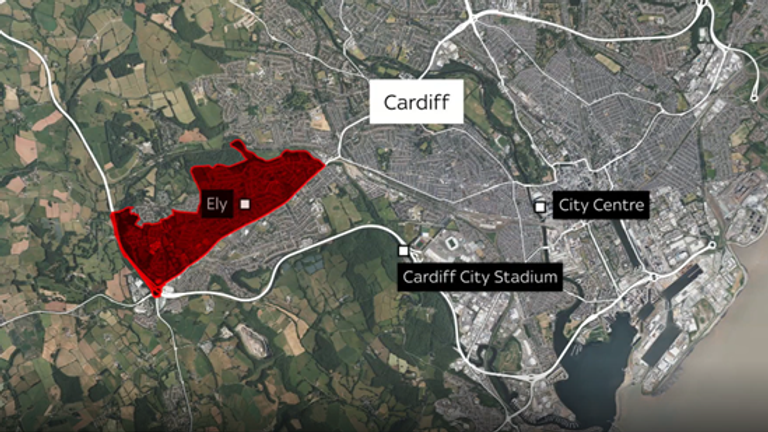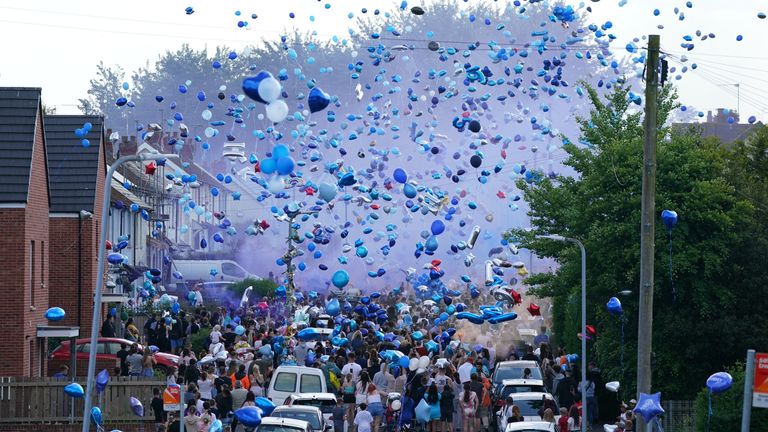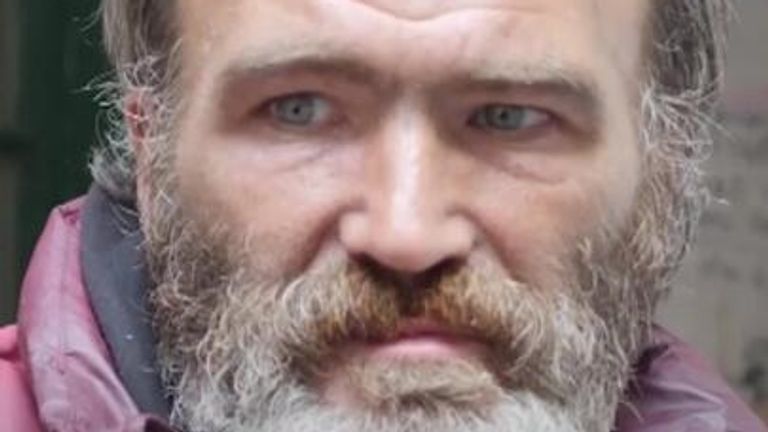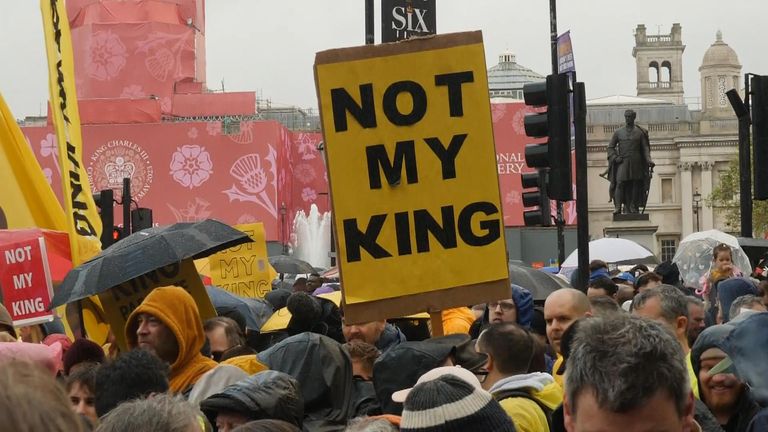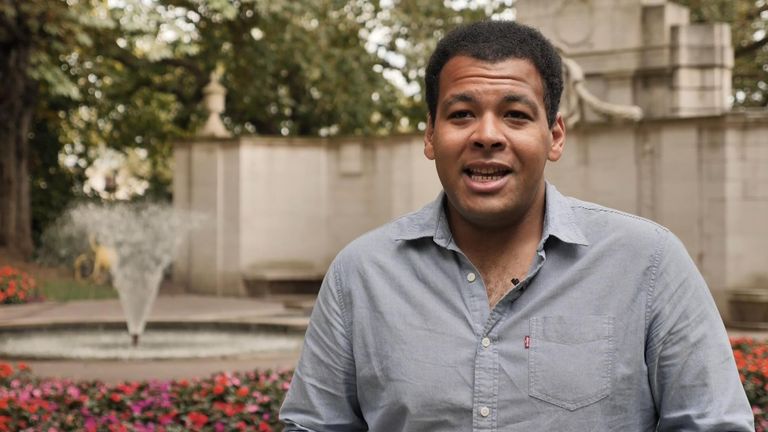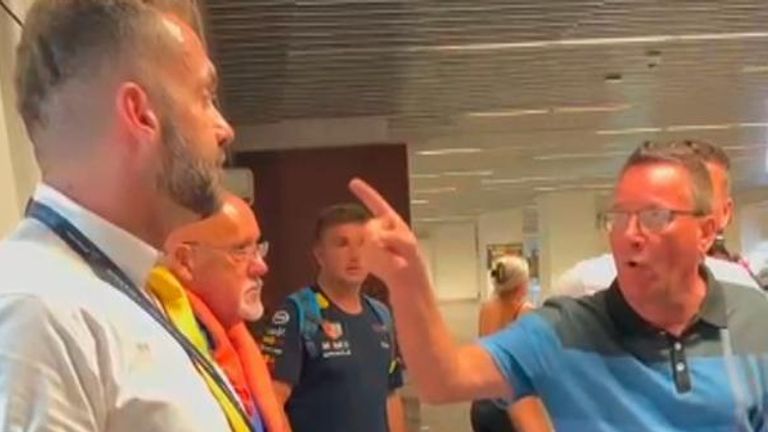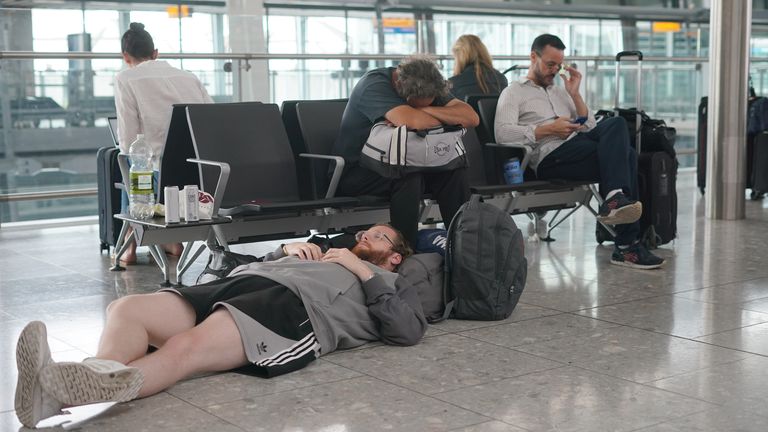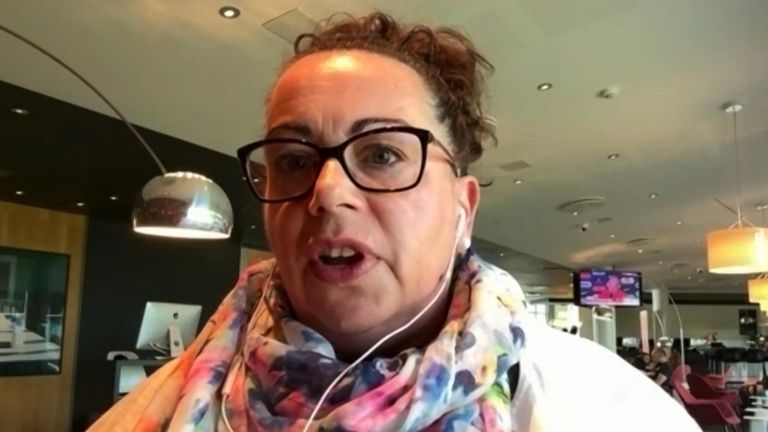The Home Office is eyeing an expansion of the use of facial recognition software – including potentially within police forces and the security agencies.
The department put out a call asking for companies to make suggestions of how they could improve the way in which facial recognition is used by the government.
And the market exploration states the government is after benefits that “could be deployed to benefit the Home Office and policing within the next 18 months”.
Politics latest: Rishi Sunak says it’s ‘sensible to engage’ with China
All 43 police forces of England and Wales “are an example of potential customers” for such technologies, alongside “other security agencies”.
The government’s innovation department, Defence and Security Accelerator (DASA), is also part of the process, which will run until 12 October 2023.
Live facial recognition – where cameras scan an area and analyse every person that passes through – is one of the areas in which the government is interested in expanding its position.
They also want to improve their use of retrospective facial recognition, which allows authorities to use the technology “after an event to establish who a person is or whether their image matches other media held on a database”.
A third area is operator-initiated facial recognition – which is where an “operator” can decide they need to use facial recognition on a particular image to help find out who they are.
The use of facial recognition by police forces has raised concerns about privacy, especially when cameras are deployed in public areas.
There are also concerns about how data is stored, and the companies which supply the technology.
A scientific adviser to the police has emphasised the authorities’ desire to “strike the right balance between public safety and individual privacy rights”.
Campaigners liken the technology to that used in Russia and China.
Read more:
Police insist facial recognition tech ‘a force for good
Technology ‘will turn our streets into police line-ups’
Please use Chrome browser for a more accessible video player

2:27
‘Police must investigate every theft’
South Wales Police was found to have used the technology unlawfully in 2020, as it had breached privacy rights, data protection laws and equality legislation.
The force has since adopted a code of practice to outline its obligations when scanning the public’s faces.
The Metropolitan Police has also used the technology, including at events like the coronation.
‘Totally unnecessary, un-Conservative and un-British’
Speaking about the latest development, Silkie Carlo, director of Big Brother Watch said: “It’s disturbing and deeply undemocratic that the government is planning to expand facial recognition surveillance in the UK. This is an Orwellian mass surveillance tool rarely seen outside of Russia and China and has absolutely no place in Britain.
“The government has no mandate at all to do this, and the fact that the rest of the democratic world is legislating to ban live facial recognition surveillance shows just how backwards the Home Office’s approach to this is.
“Live facial recognition has the potential to invade the privacy of millions of Brits and turn us into walking ID cards living in a surveillance state.
“It is totally unnecessary, un-Conservative and un-British, and the policing minister would do best to focus on fixing our broken law enforcement rather than spending taxpayers’ money on dystopian, experimental software.”
Megan Goulding, a lawyer at Liberty, said: “We all have the right to go about our lives freely, without being scanned and monitored. It’s unacceptable that the government is now looking for new ways to invade our privacy and free expression using facial recognition technology.
“This dystopian technology subjects anyone existing in public to intrusive surveillance, and has a harsher impact on those communities who are already unfairly targeted by the police.
“A court has already ruled once that the use of facial recognition technology breached our fundamental rights. Instead of looking for ways to expand it, the government should be banning its use.”
‘Significantly enhance public safety’
Policing minister Chris Philp has endorsed the potential expansion of the use of technology.
Professor Paul Taylor, the national policing chief scientific adviser said: “Mr Philp and I strongly support the development and implementation of facial recognition technology within the law enforcement sector and are encouraged by its potential.
“We firmly believe that embracing this advanced technology can significantly enhance public safety while respecting individual rights and privacy. Industry is pivotal to realisation of that mission.
“It is essential to acknowledge the concerns surrounding facial recognition technology, particularly those relating to privacy and potential biases.
“However, responsible development and implementation of facial recognition systems can address these concerns effectively.
Spreaker
This content is provided by Spreaker, which may be using cookies and other technologies.
To show you this content, we need your permission to use cookies.
You can use the buttons below to amend your preferences to enable Spreaker cookies or to allow those cookies just once.
You can change your settings at any time via the Privacy Options.
Unfortunately we have been unable to verify if you have consented to Spreaker cookies.
To view this content you can use the button below to allow Spreaker cookies for this session only.
Enable Cookies
Allow Cookies Once
Click to subscribe to the Sky News Daily wherever you get your podcasts
“By establishing robust governance frameworks, implementing strict data protection protocols, and ensuring transparency and accountability, we can strike the right balance between public safety and individual privacy rights.
“To maximise the technological benefits and minimise the risks associated with facial recognition, it is crucial that we support and encourage industry to continue developing capabilities which can be deployed effectively and ethically.”


